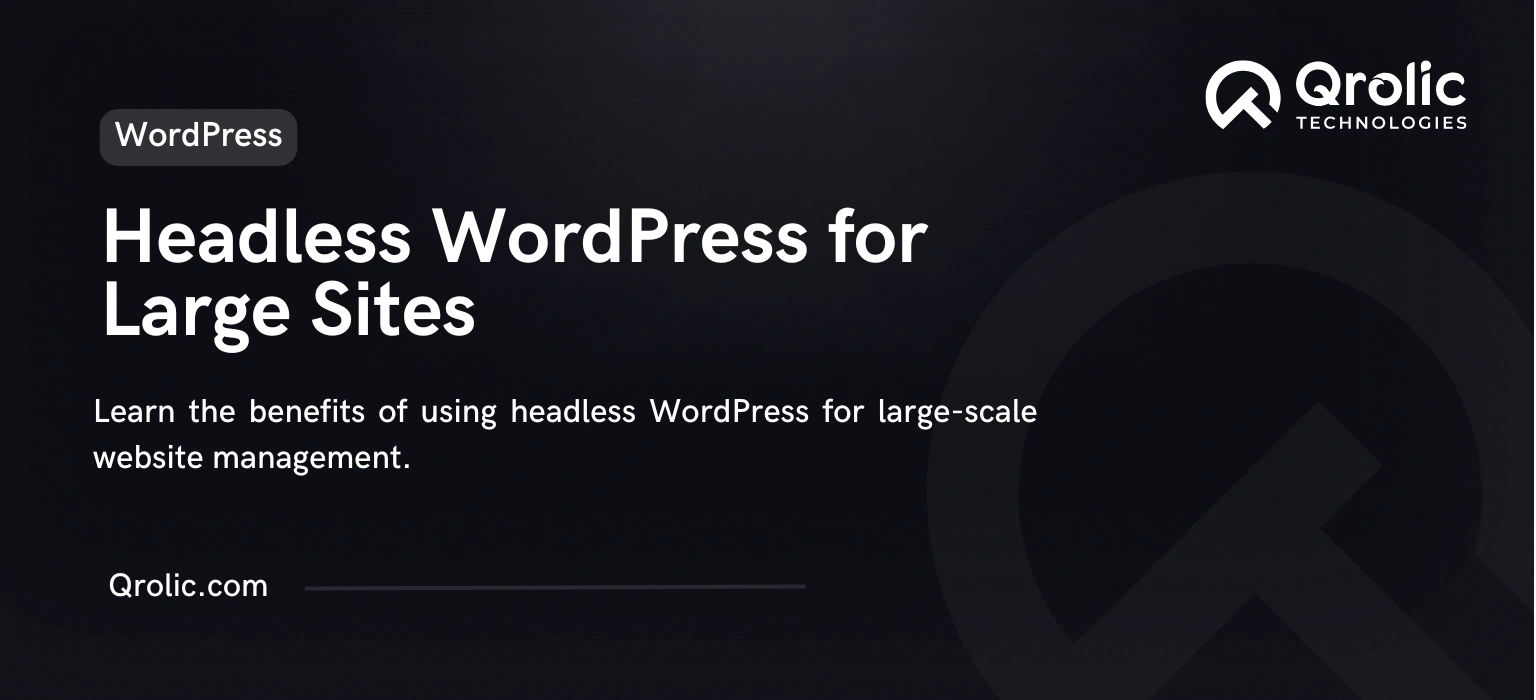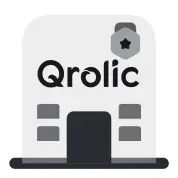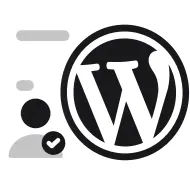As websites grow in complexity and scale, traditional content management systems (CMS) often struggle to keep up with the demands for faster performance, enhanced scalability, and seamless integration across multiple platforms. Enter Headless WordPress, a modern approach to web development that decouples the backend from the frontend, offering unprecedented flexibility and power.
This comprehensive guide will delve into what Headless WordPress is, its advantages for large websites, and why it’s becoming the go-to solution for enterprises looking to elevate their digital presence.
Quick Summary:
- Headless WordPress separates content from your website’s look.
- Get faster performance, better scalability, and stronger security.
- Deliver content everywhere, easily future-proofing your site.
Table of Contents
- What is Headless WordPress?
- How Does Headless WordPress Work?
- Benefits of Headless WordPress for Large Websites
- 1. Enhanced Performance
- 2. Scalability for High-Traffic Websites
- 3. Omnichannel Content Delivery
- 4. Developer Flexibility
- 5. Better Security
- 6. Improved SEO Capabilities
- 7. Personalization and Dynamic Content
- 8. Long-Term Cost Efficiency
- Use Cases for Headless WordPress in Large Websites
- 1. Media and News Platforms
- 2. eCommerce Sites
- 3. Enterprise-Level Portals
- 4. Educational Platforms
- Challenges of Headless WordPress
- 1. Higher Development Costs
- 2. Complexity
- 3. Plugin Compatibility
- Best Tools and Frameworks for Headless WordPress
- 1. Frontend Frameworks
- 2. Static Site Generators
- 3. API Tools
- 4. Hosting Providers
- How Qrolic Technologies Can Help
- Conclusion
What is Headless WordPress?
Headless WordPress refers to the decoupling of the WordPress CMS backend (content management and storage) from its frontend (the user-facing interface). Instead of using WordPress’s default themes and templating system to render the site, developers use APIs (such as REST or GraphQL) to deliver content to a custom frontend built with modern frameworks like React, Angular, or Vue.js.
How Does Headless WordPress Work?
- Content Management: WordPress is still used as a robust CMS for creating and managing content.
- API Delivery: The content is served via APIs (REST API or GraphQL) to any frontend or platform.
- Custom Frontend: Developers build the frontend using advanced frameworks and tools, enabling enhanced performance and tailored user experiences.
Benefits of Headless WordPress for Large Websites
1. Enhanced Performance
Traditional WordPress sites often rely on themes and plugins that can slow down page loading times. With Headless WordPress, the frontend is separated, allowing developers to optimize performance using faster frameworks and static site generation.
- Faster Load Times: Static site generators like Gatsby or Next.js can pre-render pages, drastically improving loading speeds.
- Reduced Server Load: The backend only handles API requests, freeing up resources for content management.
2. Scalability for High-Traffic Websites
For large websites with massive traffic, traditional WordPress setups can struggle to maintain speed and uptime. The headless architecture enables better scalability.
- Content Delivery Networks (CDNs): Static content can be distributed globally through CDNs, reducing latency.
- Asynchronous Processing: APIs decouple frontend requests from backend operations, ensuring smoother performance during traffic spikes.
3. Omnichannel Content Delivery
Headless WordPress allows content to be reused and distributed across multiple platforms, not just a website.
- Cross-Platform Compatibility: Deliver content to mobile apps, IoT devices, kiosks, and more.
- Future-Proof: As new technologies emerge, the same backend can power different frontends without requiring a complete overhaul.
4. Developer Flexibility
With Headless WordPress, developers are not restricted by the limitations of PHP-based WordPress themes. They can use modern technologies and frameworks to build dynamic, engaging user interfaces.
- Custom Frontend: Use React, Angular, or Vue.js for tailored designs and interactions.
- Integration-Friendly: Easily integrate third-party APIs, databases, and microservices.
5. Better Security
Decoupling the frontend from the backend provides an added layer of security for large websites.
- Reduced Attack Surface: The frontend and backend are independent, making it harder for attackers to exploit vulnerabilities.
- API Restrictions: Secure API endpoints can be configured to limit access and protect sensitive data.
6. Improved SEO Capabilities
Headless WordPress empowers developers to optimize SEO in ways not possible with traditional setups.
- Static Site Generation: Pre-rendered static pages are favoured by search engines for faster indexing.
- Custom Meta Tags: Developers can add dynamic meta tags, JSON-LD structured data, and other SEO features with greater control.
- Enhanced Page Speed: Faster-loading pages contribute to higher search engine rankings.
7. Personalization and Dynamic Content
Large websites often need to deliver personalized experiences to their users. Headless WordPress makes this easier.
- API-Driven Personalization: Serve different content to users based on their preferences, location, or behaviour.
- Real-Time Updates: APIs enable real-time updates without reloading the page.
8. Long-Term Cost Efficiency
While the initial investment in a Headless WordPress setup may be higher, the long-term benefits often outweigh the costs.
- Reusable Backend: The same WordPress backend can power multiple frontends, reducing redundancy.
- Lower Maintenance Costs: Static content requires less server power, reducing hosting costs.
Use Cases for Headless WordPress in Large Websites
1. Media and News Platforms
With heavy traffic and the need for real-time updates, media platforms can benefit from faster load times and omnichannel delivery.
2. eCommerce Sites
Headless WordPress allows large eCommerce platforms to deliver personalized shopping experiences with seamless integrations for payment gateways and inventory systems.
3. Enterprise-Level Portals
Enterprises can use Headless WordPress to power internal tools, customer-facing websites, and mobile apps simultaneously.
4. Educational Platforms
Education platforms can leverage Headless WordPress for delivering courses across websites, apps, and learning management systems (LMS).
Challenges of Headless WordPress
1. Higher Development Costs
Building a custom frontend requires skilled developers and additional resources, which may increase initial costs.
2. Complexity
Managing a separate backend and frontend can be challenging without proper expertise.
3. Plugin Compatibility
Many WordPress plugins are designed for traditional setups and may not work seamlessly with a Headless WordPress architecture.
Best Tools and Frameworks for Headless WordPress
1. Frontend Frameworks
- React.js
- Vue.js
- Angular.js
2. Static Site Generators
- Gatsby
- Next.js
3. API Tools
- WordPress REST API
- GraphQL
4. Hosting Providers
- Netlify
- Vercel
- WP Engine
How Qrolic Technologies Can Help
At Qrolic Technologies, we specialize in creating scalable, high-performance Headless WordPress solutions tailored for large websites. Our services include:
- Implementing Headless WordPress architectures.
- Building custom frontends with modern frameworks.
- Optimizing APIs for seamless content delivery.
- Ensuring security and scalability for enterprise-level projects.
With our expertise, we empower businesses to leverage the full potential of Headless WordPress, ensuring a competitive edge in the digital landscape.
Conclusion
Headless WordPress offers a powerful, flexible, and scalable solution for large websites, addressing the challenges of traditional WordPress setups. With benefits like enhanced performance, omnichannel content delivery, and improved security, it’s an ideal choice for enterprises and growing businesses.
By adopting Headless WordPress, you can future-proof your website, provide exceptional user experiences, and stay ahead in an ever-evolving digital world. Partnering with experts like Qrolic Technologies ensures a smooth transition to this cutting-edge approach, unlocking the full potential of your online presence.









